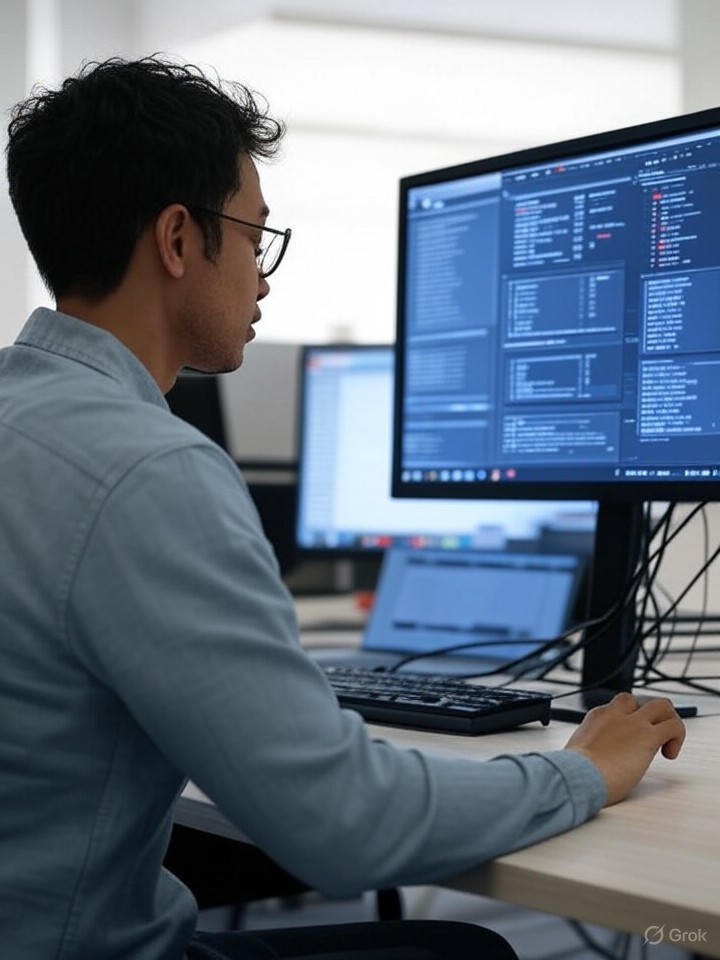In the fast-evolving world of corporate technology, IT departments are grappling with an unprecedented surge in demands, often bogged down by mundane tasks that drain resources and stifle innovation. From resetting passwords to managing software updates, these teams are stretched thin, with workloads intensifying as companies push for digital transformation. A recent article in The Wall Street Journal highlights how this overload is prompting a reevaluation of artificial intelligence as a potential savior, not just for efficiency but for reallocating human talent to higher-value work.
Executives and IT leaders are increasingly vocal about the burnout risks, with surveys showing that routine maintenance consumes up to 60% of IT staff time. This isn’t merely an operational hiccup; it’s a strategic bottleneck that hampers agility in an era where cyber threats and cloud migrations demand constant vigilance.
The AI Promise for Streamlining Operations
Enter AI-driven solutions, which are being touted as game-changers for automating the drudgery. Tools like intelligent ticketing systems and predictive analytics platforms are emerging as frontrunners, capable of handling everything from anomaly detection in networks to automated troubleshooting. According to a report from McKinsey, nearly all companies are investing in AI, yet only 1% feel they’ve reached maturity, underscoring the untapped potential for IT workload relief in 2025.
Recent implementations show promising results. For instance, AI-powered virtual chief information security officers (vCISOs) have slashed workloads by 68%, as detailed in a study by Cynomi featured on BleepingComputer. This shift allows IT professionals to focus on strategic initiatives rather than repetitive alerts, with small and medium-sized businesses leading the adoption curve through managed service providers.
Challenges in Adoption and Integration
However, integrating AI isn’t without hurdles. Many organizations report that while executives expect productivity boosts, employees often find AI adding to their burdens initially, as per findings in a Forbes study where 77% of workers noted increased workloads and hampered productivity. The key lies in proper training and phased rollouts to avoid overwhelming already strained teams.
On the hardware front, innovations like programmable AI silicon are addressing the computational demands of these workloads. As discussed at the Imec ITF World 2025 conference and reported by EE Times, such advancements could make silicon as adaptable as software, ensuring AI systems keep pace with escalating data volumes without constant human intervention.
Real-World Case Studies and Predictions
Industry insiders point to success stories, such as RAVEL’s Orchestrate AI software, which optimizes workloads for hardware like Supermicro servers, as covered in Inside HPC. This tool automates orchestration, reducing manual oversight by up to 50% in data centers. Similarly, PwC’s AI Jobs Barometer predicts that by mid-2025, AI agents will handle 20-50% of routine IT tasks, transforming departments into overseers of digital workers.
Posts on X (formerly Twitter) reflect growing sentiment among tech professionals, with users like Bindu Reddy forecasting that 2025 will see organizations deploying hundreds of AI agents to automate workflows, complete with enterprise data integration. Another post from Mario Nawfal echoes Nvidia CEO Jensen Huang’s vision: IT departments evolving into “HR for AI agents,” managing onboarding and policies for these digital entities.
Strategic Shifts and Future Outlook
For CIOs, AI duties now dominate workloads, with 80% tasked with evaluating tools, according to a report on Digit.fyi. This leadership role is crucial, as embracing AI could lighten repetitive tasks and foster innovation, per statistics from Apollo Technical, where AI is seen as an efficiency booster rather than a threat.
Yet, experts warn of over-reliance. The World Economic Forum’s insights, as shared in their 2025 workplace analysis, suggest that 80% of C-suite leaders anticipate AI-driven cultural shifts toward innovation, but only if balanced with human oversight. As IT departments navigate this transition, the focus must remain on ethical deployment and upskilling to ensure AI alleviates overload rather than exacerbating it.
Balancing Innovation with Human Elements
Looking ahead, trends like AI workload strategies in hybrid infrastructures, outlined in Telehouse’s 2025 report, indicate a move toward distributed computing that offloads tasks from central IT teams. Combined with emerging ticketing systems from sources like Rezolve.ai, these developments promise a future where IT pros tackle complex problems, not busywork.
Ultimately, as McKinsey’s state of AI survey reveals, organizations rewiring for value capture will thrive. By 2025’s end, AI could redefine IT from a cost center to a strategic powerhouse, provided leaders invest wisely in tools that truly empower their teams.




 WebProNews is an iEntry Publication
WebProNews is an iEntry Publication